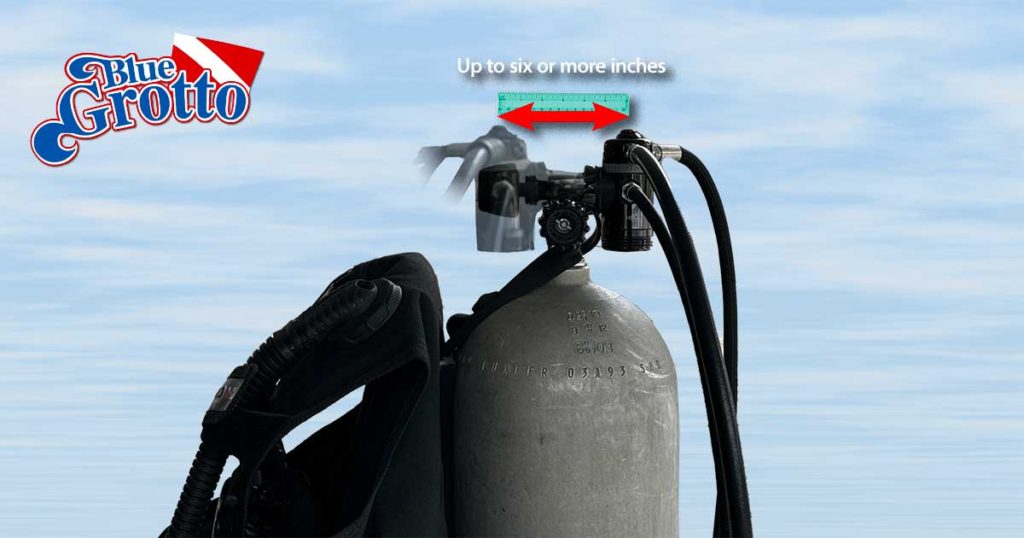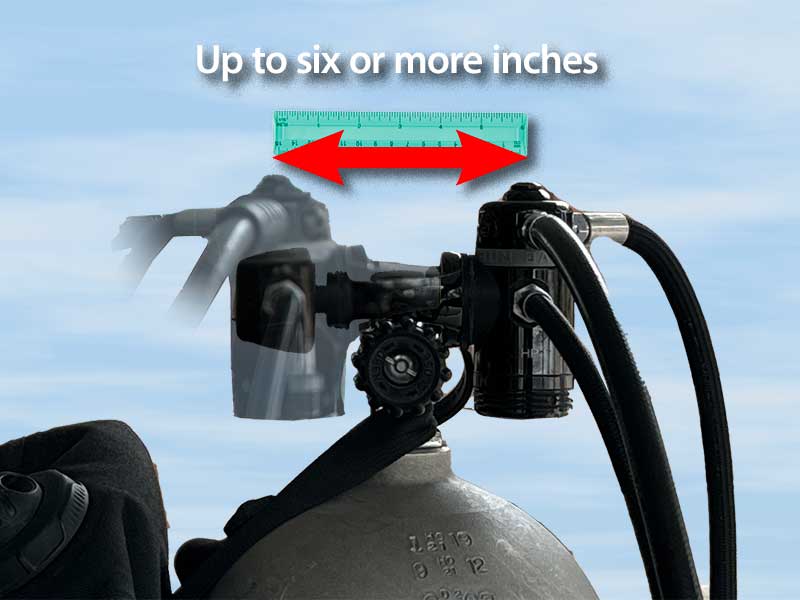This past weekend, we watched as a group of divers exited the water. What stood out is the fact at least two of the divers had their tanks attached to their BCs backward so that the air flowed away from the divers rather than toward them.
So, how were they able to dive? They did so by attaching their regulators to their tanks upside-down. This put the second-stage hoses on the right and the SPG and low-pressure inflator hoses on the left. Because this allowed the divers to make the dive, it wasn’t a problem…right? Not quite.
When divers attach regulators to tanks upside-down and backward, the high- and low-pressure hoses can be as much as six inches further away from the divers than they would normally be. Depending on the first-stage design, the hoses may even be angled away from the divers instead of toward them. Why is this a problem?
- To start, the primary second-stage hose will most likely tug uncomfortably at the user’s mouth. This can be distracting at a time when divers should be paying attention to other things.
- If a diver must recover a missing second stage, they may discover it’s impossible, as the second stage is now out of reach.
- If the low-pressure inflator hose is normally just the right length to reach the power inflator mechanism, it may now pull the inflator back where it is out of sight and impossible to reach.
All of these problems are potentially dangerous. They are the kind of thing buddies should check each other for before every dive. Instructors, especially, should inspect each student’s scuba unit to ensure it is correctly assembled.
Earlier this year, we published a video showing how to assemble a scuba unit correctly. Based on what we saw this past weekend, we are going to share it again.
If you see another diver whose scuba unit is set up incorrectly, say something. You may end up saving somebody’s life.



